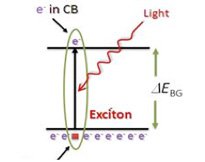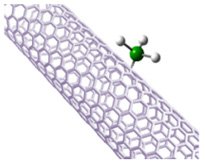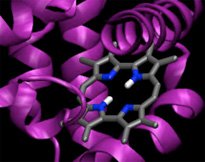Arindam (Ari) Chakraborty

Arindam (Ari) Chakraborty
Professor
CONTACT
Chemistry
4-008 Center for Science and Technology
Email: archakra@syr.edu
Office: 315.443.5803
PROGRAM AFFILIATIONS
Biochemistry
Biotechnology
Degrees
- Ph.D., 2005, University of Minnesota
- Postdoctoral research, 2006-2009, Pennsylvania State University
Social/Academic Links
Courses Taught
- CHE 116: General Chemistry I
- CHE 346: Physical Chemistry
- CHE 436/636: Advanced Physical Chemistry
- CHE 645: Quantum Mechanics in Chemistry
- CHE 656: Chemical Thermodynamics
Physical and theoretical chemistry; quantum dots; nanomaterials
The primary focus of my research is development of new theoretical and computational methods for studying complex molecular systems using classical, semiclassical, and quantum mechanics. We are specifically interested in quantum mechanics of electron-hole pair, combined quantum mechanical treatment of electrons and nuclei in molecules, nuclear quantum effects, multicomponent density functional theory (MCDFT), and mixed quantum-classical methods. Application areas include quantum dots, light harvesting materials, carbon nanotubes, and biomolecules. The long-term goal is to achieve accurate description of the quantum mechanical processes in novel materials and biochemical systems at affordable computational cost.
Specific projects
Quantrum Dots image
Exciton formation in quantum dots

Quantum dots and nanocrystals have novel photovoltaic properties with promising potential for use in solar cells. The predominant process by which light interacts with quantum dots occurs via exciting electrons from the valence band (VB) to the conduction band (CB), resulting in generation of electron-hole pairs known as excitons. The primary focus of our research is development of quantum mechanical methods for describing electron-hole pairs in quantum dots. These methods can be used for computation of binding energies and radiative lifetimes that are important for applications of quantum dots in solar cells and light emitting devices.
---
Carbon Nanotube image
SiH3 modified carbon nanotube

Chemically modified carbon nanotubes play an important role in manufacturing, development, and miniaturization of electronic devices. The electronic and thermal properties can be tuned by chemical modifications such as doping and attaching chemical groups. Theoretical investigations will provide insight into the effect of these chemical modifications. Current research is focused on development of new computational methods for calculation of electrical and thermal conductivity of chemically modified nanotubes.
---
Nuclear Quantum effects image
Only H atoms (white) are treated by
quantum mechanics

Nuclear quantum effects in biomolecules are important in hydrogen transfer reactions in enzymes. Inclusion of quantum mechanical effects such as zero point energy and tunneling in calculations of reaction rate constants are important for comparison with experimentally observed kinetic-isotope effects (KIE) in enzyme reactions. Because of its sheer size, it is computationally prohibitive to treat all the nuclei in a protein quantum mechanically. The aim of the present research is to develop mixed quantum-classical methods, where only the transferring hydrogen atom is treated quantum mechanically, and all the remaining nuclei in the protein are treated classically.
- Infinite-order diagrammatic summation approach to the explicitly correlated congruent transformed Hamiltonian, M. G. Bayne, J. Drogo, and A. Chakraborty Physical Review A, 89 , 032515 (2014). PDF
- Effect of dot size on exciton binding energy and electron-hole recombination probability in CdSe quantum dots, J. M. Elward and A. Chakraborty Journal of Chemical Theory and Computation, 9, 4351 (2013). PDF
- Development of polaron-transformed explicitly correlated full configuration interaction method for investigation of quantum-confined Stark effect in GaAs quantum dots, C. J. Blanton, C. Brenon, and A. Chakraborty Journal of Chemical Physics, 138, 054114 (2013). PDF
- Variational solution of the congruently transformed Hamiltonian for many-electron systems using a full-configuration-interaction calculation, J. M. Elward, J. Hoja, and A. Chakraborty Physical Review A, 86, 062504 (2012). PDF
- Investigation of electron-hole correlation using explicitly correlated configuration interaction method, J. M. Elward, J. Hoffman, and A. Chakraborty Chemical Physics Letters, 535, 182 (2012). PDF
- Calculation of electron-hole recombination probability using explicitly correlated Hartree-Fock method, J. M. Elward, B. Thallinger, and A. Chakraborty Journal of Chemical Physics, 136, 124105 (2012). PDF
(Jan. 29, 2015)
Arindam ‘Ari’ Chakraborty to be recognized at ACS annual meeting
